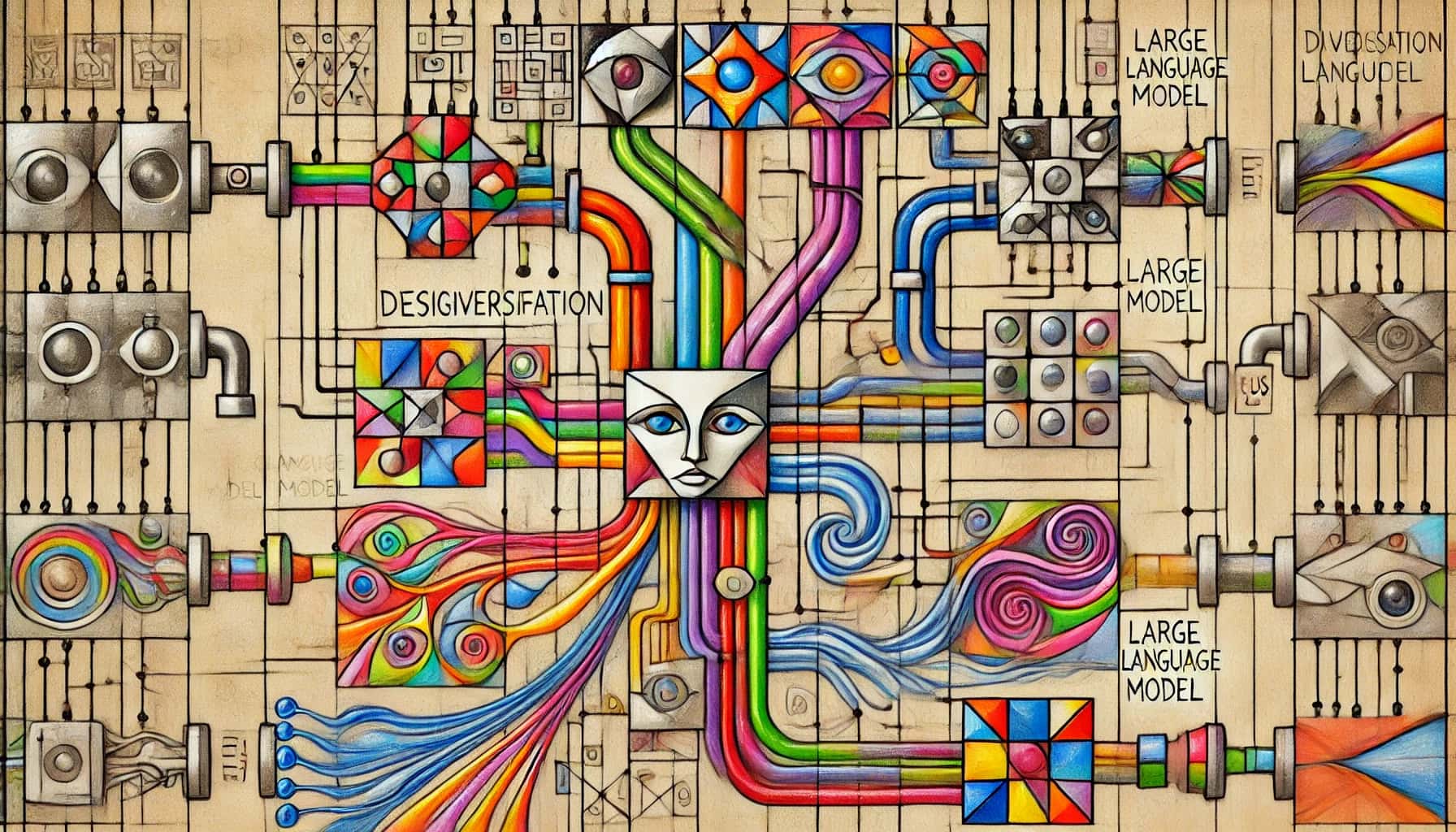In recent years, the artificial intelligence (AI) landscape has evolved significantly, moving beyond monolithic designs to embrace diversified, distributed, and highly specialized architectures. As businesses face increasing demands for efficiency, performance, reliability, and security, traditional single-model AI systems are proving insufficient. Inspired by microservices architecture, the Diversification Design approach in AI architectures offers a robust framework to meet these emerging needs.
This article explores why diversification is becoming critical and how multi-agent AI systems—consisting of smaller, highly specialized Large Language Models (LLMs)—can effectively address data security, performance, accuracy, and operational efficiency in business settings.
Rationale Behind Diversification Design
The Microservices Inspiration
In traditional software, monolithic applications (single, tightly-coupled codebases) were replaced by microservices—small, independent services that communicate via APIs. The benefits?
- Faster development (teams work on separate services)
- Easier scaling (only scale the services under heavy load)
- Resilience (one service failing doesn’t crash the whole system)
Diversification Design applies the same logic to AI. Instead of one giant LLM, we deploy:
- Specialized AI agents (e.g., one for legal contracts, another for medical reports)
- Distributed data processing (each agent only accesses relevant data)
- Modular deployments (update one agent without disrupting others)
Data Security and Privacy
Traditional centralized AI models inherently pose risks to data privacy, as massive datasets typically reside in single, centralized locations. Diversification Design mitigates these risks by distributing data processing across multiple specialized AI agents, each handling only specific data types or domains. Consequently, sensitive information remains segmented, drastically reducing the potential damage from data breaches or unauthorized access.
Enhanced Performance
Single-model AI solutions often face bottlenecks due to centralized processing. Diversified architectures leverage parallel processing by delegating tasks across multiple specialized AI agents, improving throughput and responsiveness. Each agent processes requests simultaneously, providing rapid feedback essential for real-time decision-making.
Improved Response Quality with Specialized LLMs
Using specialized Large Language Models tailored to distinct tasks significantly enhances output accuracy and relevance. Specialized LLMs trained on focused datasets outperform generic models, reducing hallucinations—false or misleading AI-generated content. This specialization is crucial for high-stakes business contexts, such as customer service automation, regulatory compliance checks, and critical system diagnostics.
Distributed Development Efficiency
Diversification Design enables modularity akin to microservices, streamlining development. Smaller, more focused AI agents reduce complexity, making development teams agile and specialized. This modularity significantly reduces bugs and simplifies maintenance, testing, and updates, thus enhancing development velocity and system reliability.
Reducing AI Hallucinations
AI hallucinations pose substantial challenges, particularly in business-critical applications. Diversified AI architectures address this by incorporating domain-specific agents whose narrower focus and tailored training sets significantly decrease irrelevant or erroneous outputs.
Easier Deployment and Debugging
Smaller AI components simplify deployment, version control, and debugging processes. Modular agents can be independently updated or replaced without affecting the entire system. Troubleshooting becomes faster, as each agent’s operation is more transparent and comprehensible than large-scale monolithic systems.
Core Concepts of Diversification Design
Diversification Design in AI is fundamentally similar to the microservices concept in software engineering, where large applications are broken down into smaller, autonomous services. Key aspects include:
- Specialization: Each agent or LLM handles clearly defined tasks, achieving high accuracy in their specific domain.
- Interoperability: Effective communication protocols ensure seamless integration between agents, fostering coordination and data exchange.
- Scalability: Individual agents scale independently, optimizing resource usage.
- Fault Tolerance: System stability increases, as failure in one agent does not impact overall operations.
Practical Implementation Strategies
Step 1: Task Decomposition
Identify business processes and workflows suitable for decomposition into distinct, manageable tasks. Tasks should be logically independent, allowing AI agents to specialize effectively.
Step 2: Design Specialized LLMs
Develop and train specialized LLMs with tailored datasets and defined scopes. This step ensures minimal overlap, thereby optimizing accuracy and minimizing resource wastage.
Step 3: Establish Communication Protocols
Implement standardized APIs and messaging protocols to ensure smooth interactions between AI agents. Tools such as RESTful APIs, gRPC, or message queues (Kafka, RabbitMQ) facilitate effective inter-agent communication.
Step 4: Monitor and Evaluate Performance
Regularly evaluate the accuracy, efficiency, and reliability of each AI agent using metrics aligned with specific business outcomes. Continuous monitoring ensures early detection and resolution of potential issues.
Case Studies of Diversified AI Systems
Financial Sector
In financial services, diversified AI architectures significantly enhance transaction monitoring, fraud detection, and compliance reporting. Each specialized AI agent independently handles anomaly detection, customer behavior analysis, and regulatory compliance, collectively improving performance and accuracy.
Healthcare
Healthcare providers benefit from diversified AI by employing specialized agents for diagnostics, patient data management, and personalized treatment recommendations. The modular approach ensures patient data security and enhances the speed and accuracy of clinical decisions.
Customer Service
Companies employing diversified AI systems for customer service automation observe remarkable improvements in response quality and customer satisfaction. Specialized agents dedicated to customer query classification, sentiment analysis, and issue resolution significantly outperform traditional single-model systems.
Future Trends
Diversification Design in AI is expected to dominate future AI architecture strategies. As AI applications grow more complex, embracing diversification will be critical to maintaining competitive advantages in accuracy, responsiveness, and security.
Key future trends include:
- Increasingly specialized LLMs for niche applications.
- Advanced agent coordination and orchestration frameworks.
- Enhanced privacy-preserving distributed architectures.
